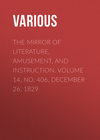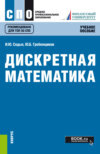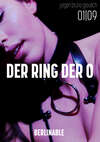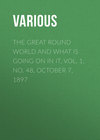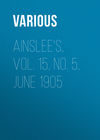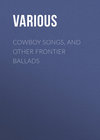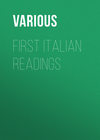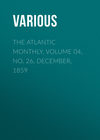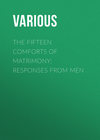Читать книгу: «The Mirror of Literature, Amusement, and Instruction. Volume 14, No. 406, December 26, 1829», страница 5
"The Earls of Gloucester and Hereford charged the Scots left wing, under Edward Bruce, with their men at arms; but some rivalry between these two great Lords induced them to hurry to the charge with more of emulation than of discretion, and arriving at the shock disordered and out of breath, they were unable to force the deep ranks of the spearmen; many horses were thrown down, and their masters left at the mercy of the enemy. The other three divisions of the Scottish army attacked the mass of the English infantry, who resisted courageously. The English archers, as at the battle of Falkirk, now began to show their formidable skill, at the expense of the Scottish spearmen; but for this Bruce was prepared. He commanded Sir Robert Keith, the Marshal of Scotland, with those four hundred men at arms whom he had kept in reserve for the purpose, to make a circuit, and charge the English bowmen in the flank. This was done with a celerity and precision which dispersed the whole archery, who, having neither stakes nor other barrier to keep off the horse, nor long weapons to repel them, were cut down at pleasure, and almost without resistance.
"The battle continued to rage, but with disadvantage to the English. The Scottish archers had now an opportunity of galling their infantry without opposition; and it would appear that King Edward could find no means of bringing any part of his numerous centre or rear-guard to the support of those in the front, who were engaged at disadvantage.
"Bruce, seeing the confusion thicken, now placed himself at the head of the reserve, and addressing Angus of the Isles in the words, "My hope is constant in thee," rushed into the engagement followed by all the troops he had hitherto kept in reserve. The effect of such an effort, reserved for a favourable moment, failed not to be decisive. Those of the English who had been staggered were now constrained to retreat; those who were already in retreat took to actual flight. At this critical moment, the camp-followers of the Scottish army, seized with curiosity to see how the day went, or perhaps desirous to have a share of the plunder, suddenly showed themselves on the ridge of the Gillies'-hill, in the rear of the Scottish line of battle; and as they displayed cloths and horse-coverings upon poles for ensigns, they bore in the eyes of the English the terrors of an army with banners. The belief that they beheld the rise of an ambuscade, or the arrival of a new army of Scots, gave the last impulse of terror, and all fled now, even those who had before resisted. The slaughter was immense; the deep ravine of Bannockburn, to the south of the field of battle, lying in the direction taken by most of the fugitives, was almost choked and bridged over with the slain, the difficulty of the ground retarding the fugitive horsemen till the lancers were upon them. Others, and in great numbers, rushed into the river Forth, in the blindness of terror, and perished there. No less than twenty-seven Barons fell in the field; the Earl of Gloucester was at the head of the fatal list: young, brave, and high-born, when he saw the day was lost, he rode headlong on the Scottish spears, and was slain. Sir Robert Clifford, renowned in the Scottish wars, was also killed. Two hundred Knights and seven hundred Esquires, of high birth and blood, graced the list of slaughter with the noblest names of England; and thirty thousand of the common file filled up the fatal roll.
"Edward, among whose weaknesses we cannot number cowardice, was reluctantly forced from the bloody field by the Earl of Pembroke. The noble Sir Giles de Argentine considered it as his duty to attend the King until he saw him in personal safety, then observing that "it was not his own wont to fly," turned back, rushed again into the battle, cried his war-cry, galloped boldly against the victorious Scots, and was slain, according to his wish, with his face to the enemy. Edward must have been bewildered in the confusion of the field, for instead of directing his course southerly to Linlithgow, from which he came, he rode northward to Stirling, and demanded admittance. Philip de Mowbray, the governor, remonstrated against this rash step, reminding the unfortunate Prince that he was obliged by his treaty to surrender the castle next day, as not having been relieved according to the conditions.
"Edward was therefore obliged to take the southern road; and he must have made a considerable circuit to avoid the Scottish army. He was, however, discovered on his retreat, and pursued by Douglas with sixty horse, who were all that could be mustered for the service. The King, by a rapid and continued flight through a country in which his misfortunes must have changed many friends into enemies, at length gained the castle of Dunbar, where he was hospitably received by the Earl of March. From Dunbar Edward escaped almost alone to Berwick in a fishing skiff, having left behind him the finest army a King of England ever commanded.
"The quantity of spoil gained by the victors at the battle of Bannockburn was inestimable, and the ransoms paid by the prisoners largely added to the mass of treasure. Five near relations to the Bruce—namely, his wife, her sister Christian, his daughter Marjory, the Bishop of Glasgow (Wishart), and the young Earl of Mar, the King's nephew, were exchanged against the Earl of Hereford, High Constable of England.
"The Scottish loss was very small: Sir William Vipont and Sir Walter Ross were the only persons of consideration slain. Sir Edward Bruce is said to have been so much attached to the last of these knights as to have expressed his wish that the battle had remained unfought, so Ross had not died."
The present volume contains 350 pages, in a very pleasing type, and a vignette title; and the style in which it is produced is uniformly worthy of the very responsible quarter whence it emanates.
THE YOUNG LADY'S BOOK
This is indeed a golden gift for any demoiselle of our readers' acquaintance, for it blends the unusual qualities of elegance and usefulness of the highest order. It is described in the title as "A Manual of Elegant Recreations, Exercises and Pursuits," and numbers in its contents, Moral deportment—the Florist—Mineralogy, Conchology, Entomology, the Aviary, the Toilet, Embroidery, the Escrutoire, Painting, Music, Dancing, Archery, Riding, and the Ornamental Artist. Each of these subjects is treated of in separate chapters, in a neat style, slightly scientific, and highly amusive; and the whole are illustrated with upwards of Six Hundred Engravings, which are appropriately chosen and admirably executed. Botany, Conchology, Entomology, and the Aviary thus admit of scores of little cuts worked in with the type; the female accomplishments of Embroidery, ornamental card and basket work, contain many beautiful devices; and the "elegant recreations" of Dancing, Riding, &c. are equally well illustrated by the various forms, positions, &c.—Each subject has been treated of by a master or mistress of the respective art, but the uniformity with which the editor has marshalled them in his work, almost makes them resemble the productions of one hand. We need not point out the merit of this individual contribution; for the lady-pen must be omnipotent indeed which could write equally well on every branch of female accomplishment. By way of a seasonable extract we take part of a brief historical sketch prefixed to the Dancing instructions, and a few of the hints:—
"From the death of Elizabeth, until after the restoration of Charles II., the turbulence of the times, and the peculiar character of the age, prevented this art, which flourishes only in 'the bowers of peace and joy,' from making much progress; but in the days of the merry monarch it began to revive, and advanced more, or less, in all the succeeding reigns. The celebrated Beau Nash, who was, for a long time, M.C. at Bath, may be considered the founder of modern ball-room dancing; which, however, has been divested of much of its cold formality, and improved in various other respects since the time of that singular person. It is, nevertheless, a matter of regret, that the graceful and stately Minuet has been entirely abandoned in favour of the more recently-invented dances.
"The French country dances, or Contre-Danses (from the parties being placed opposite to each other,) since called Quadrilles (from their having four sides) which approximate nearly to the Cotillon, were first introduced to France about the middle of Lewis the Fifteenth's reign. Previously to this period, the dances most in vogue were La Perigourdine, La Matelotte, La Pavane, Les Forlanes, Minuets, &c. Quadrilles, when first introduced, were danced by four persons only: four more were soon added, and thus the complete square was formed; but the figures were materially different from those of the present period. The gentlemen advanced with the opposite ladies, menaced each other with the fore-finger, and retired clapping their hands three times; they then turned hands of four, turned their own partners, and grand rond of all concluded the figure. The Vauxhall d'Hiver was, at that time, the most fashionable place of resort: the pupils of the Royal Academy were engaged to execute new dances; a full and effective band performed the most fashionable airs, and new figures were at length introduced and announced as a source of attraction; but this place was soon pulled down, and re-built on the ground now occupied by the Theatre du Vaudeville. The establishment failed, and the proprietor became a bankrupt. A short time after, it was re-opened by another speculator; but on such a scale, as merely to attract the working classes of the community. The band was now composed of a set of miserable scrapers, who played in unison, and continually in the key of G sharp; amid the sounds which emanated from their instruments, the jangling of a tambourin, and the shrill notes of a fife were occasionally heard. Thus did things continue until the French Revolution; when, about the time the Executive Directory was formed, the splendid apartments of the Hotel de Richelieu were opened for the reception of the higher classes, who had then but few opportunities of meeting to 'trip it on the light fantastic toe.' Monsieur Hullin, then of the Opera, was selected to form a band of twenty-four musicians, from among those of the highest talent in the various theatres: he found no difficulty in this, as they were paid in paper-money, then of little or no value; whereas, the administrators of the Richelieu establishment paid in specie. The tunes were composed in different keys, with full orchestral accompaniments, by Monsieur Hullin; and the contrast thus produced to the abominable style which had so long existed, commenced a new era in dancing: the old figures were abolished, and stage-steps were adopted;—Pas de Zephyrs, Pas de Bourrés, Ballotés, Jetés Battus, &c. were among the most popular. Minuets and Forlanes were still continued; but Monsieur Vestris displaced the latter by the Gavotte, which he taught to Monsieur Trenis and Madame de Choiseul, who first danced it at a fête given by a lady of celebrity, at the Hotel de Valentinois, Rue St. Lazar, on the 16th of August, 1797; at this fête, Monsieur Hullin introduced an entirely new set of figures of his own composition.—These elicited general approbation: they were danced at all parties, and still retain pre-eminence. The names of Pantalon, L'Eté, La Poule, La Trenis, &c. which were given to the tunes, have been applied to the figures. The figure of La Trenis, was introduced by Monsieur Trenis's desire, it being part of the figure from a Gavotte, danced in the then favourite ballet of Nina.
"To the French we are indebted for rather an ingenious, but in the opinion of many professional dancers, an useless invention, by which it was proposed, that as the steps in dancing are not very numerous, although they may be infinitely combined, that characters might be made use of to express the various steps and figures of a dance, in the same manner as words and sentences are expressed by letters; or what is more closely analogous, as the musical characters are employed to represent to the eye the sounds of an air. The well-known Monsieur Beauchamp, and a French dancing-master, each laid claim to be the original inventer of this art; and the consequence was a law suit, in which, however, judgment was pronounced in favour of the former. The art has been introduced into this country, but without success. An English dancing-master has also, we believe, with considerable labour and ingenuity, devised a plan somewhat similar to that of the French author: diagrams being proposed to represent the figures, or steps, instead of characters.
"There are a variety of dances to which the term National may, with some propriety, be applied. Among the most celebrated of these are,—the Italian Tarantula, the German Waltz, and the Spanish Bolero. To dwell on their peculiarities would, however, as it appears to us, be useless: the first is rarely exhibited, even on the stage: the second, although it still retains much of its original character, has, in this country, been modified into the Waltz Country Dance, and all the objections which it encountered, on its first introduction, seem to have been gradually overcome, since it assumed its present popular form; and the graceful Bolero is restricted to the theatre only, being never introduced to the English ball-room.
Покупайте книги и получайте бонусы в Литрес, Читай-городе и Буквоеде.
Участвовать в бонусной программе
